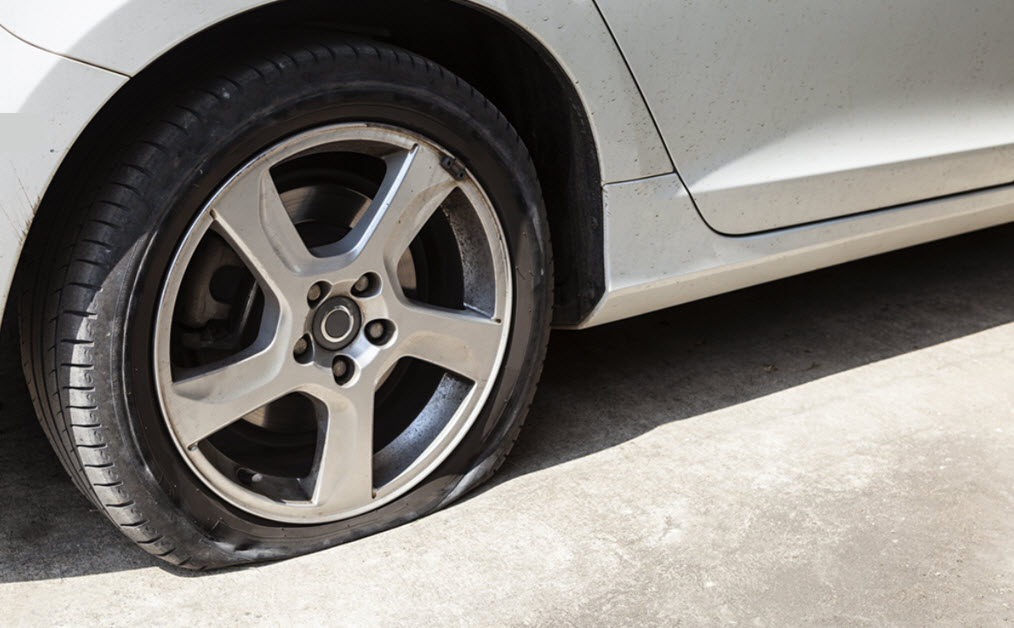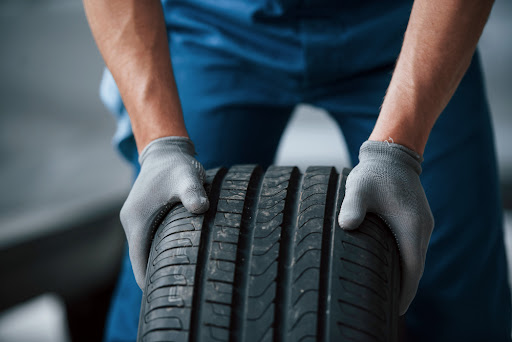Tire degradation is a critical issue that affects not only the performance of the tire but also the overall safety of the vehicle. Over time, tires naturally wear out due to various factors such as friction, heat, and exposure to oxygen. The process of tire degradation can lead to reduced grip, longer braking distances, and even tire failure, which can be catastrophic, especially for large truck fleets.
One of the primary contributors to tire degradation is the presence of oxygen within the tire. Oxygen molecules are small and can permeate through the rubber, causing oxidation. This oxidation leads to the breakdown of the tire’s internal structure, weakening it and making it more susceptible to wear and tear. Additionally, oxygen can cause the internal steel belts within the tire to corrode, further compromising the tire’s integrity.
Understanding the factors that lead to tire degradation is essential for fleet managers who aim to extend the lifespan of their tires, improve fuel efficiency, and enhance safety. By addressing these factors, it is possible to mitigate the adverse effects of tire degradation and maintain optimal tire performance.
For fleet managers looking to improve their tire maintenance strategies, request fleet pricing, contact our office at (703) 429-0382, or email Mike.LoPresti@fuelandtiresaver.com for expert advice on nitrogen tire inflation and other tire-saving techniques.
Table of Contents
ToggleUnderstanding Åastraea Nitrogen
Åastraea Nitrogen is a specialized form of nitrogen used in tire inflation, designed to significantly reduce internal tire degradation. Unlike regular compressed air, which contains approximately 21% oxygen, Åastraea Nitrogen is composed of up to 99.9% pure nitrogen. This drastic reduction in oxygen content is key to enhancing tire longevity and performance.
One of the primary benefits of using Åastraea Nitrogen is its ability to minimize oxidation within the tire. Since nitrogen molecules are larger and less reactive than oxygen molecules, they are less likely to permeate the tire’s rubber and cause harmful oxidation. This means that the tire’s internal structure remains more stable over time, reducing the risk of internal damage and corrosion of steel belts.
Additionally, Åastraea Nitrogen maintains tire pressure more consistently than regular air. Tires inflated with nitrogen experience less fluctuation in pressure due to temperature changes, which helps in maintaining optimal tire performance and reducing uneven tread wear. Consistent tire pressure also contributes to better fuel efficiency and decreased rolling resistance, which are crucial factors for fleet operators looking to save on operating costs.
By understanding the unique properties and benefits of Åastraea Nitrogen, fleet managers can make informed decisions about their tire maintenance practices, ultimately leading to safer, more efficient, and longer-lasting tires.
Impact of Oxygen on Tire Integrity

Oxygen, despite being essential for life, can be quite detrimental to the integrity of tires. When tires are inflated with regular air, which contains about 21% oxygen, this oxygen can permeate through the tire walls over time. This permeation process, known as oxidation, can lead to several issues that compromise tire integrity.
Oxidation is the primary culprit behind the degradation of the internal structure of tires. As oxygen molecules seep into the tire, they react with the rubber compounds, causing them to become brittle and less elastic. This brittleness can lead to cracks and splits in the tire, which can ultimately result in tire failure. Furthermore, oxidation can also lead to the corrosion of steel belts and other internal components, weakening the overall structure of the tire.
Another significant impact of oxygen on tire integrity is the fluctuation in tire pressure. Oxygen molecules are smaller and more volatile than nitrogen molecules, which means they can escape the tire more easily. This constant loss of air leads to frequent pressure drops, making it challenging to maintain the recommended tire pressure. Inconsistent tire pressure not only reduces fuel efficiency but also accelerates tread wear and increases the risk of blowouts.
In addition to these issues, the presence of oxygen can also increase the tire’s running temperature. Higher temperatures can exacerbate the degradation process, further compromising the tire’s structural integrity. This is particularly concerning for long-haul truck fleets that operate under heavy loads and high speeds, where tire performance and reliability are critical.
Understanding the impact of oxygen on tire integrity underscores the importance of using alternatives like Åastraea Nitrogen, which offers a reduced oxygen content and thereby mitigates these detrimental effects.
Benefits of Lower Oxygen Content

Utilizing lower oxygen content in Åastraea Nitrogen for tire inflation brings a multitude of benefits that extend beyond mere tire longevity. By significantly reducing the amount of oxygen inside the tires, Åastraea Nitrogen helps mitigate the negative effects associated with oxidation and pressure instability.
One of the primary benefits is the reduction in internal tire degradation. With less oxygen available to react with the rubber compounds, the internal structure of the tire remains more stable and resilient over time. This preservation of the tire’s internal integrity translates into fewer instances of cracks, splits, and other forms of wear, ultimately extending the tire’s lifespan significantly.
Another notable advantage is the stabilization of tire pressure. Nitrogen molecules are larger and less volatile compared to oxygen molecules, which means they do not escape as easily through the tire walls. This stability helps maintain optimal tire pressure for longer periods, reducing the need for frequent top-ups and inspections. Consistent tire pressure not only enhances fuel efficiency but also ensures better traction and handling, contributing to overall vehicle safety.
Furthermore, the use of Åastraea Nitrogen can help lower the operating temperature of the tires. Reduced oxygen levels mean less oxidation and chemical reactions that generate heat. Lower running temperatures reduce the risk of overheating, which can otherwise lead to blowouts, especially during long hauls or in high-speed conditions. This is particularly beneficial for truck fleets that require reliable and durable tire performance.
Lastly, by extending tire life and maintaining proper tire pressure, the use of Åastraea Nitrogen also has environmental benefits. Fewer tire replacements mean less rubber waste, and improved fuel efficiency translates to reduced carbon emissions. Together, these factors make Åastraea Nitrogen an eco-friendly choice for tire inflation.
How Åastraea Nitrogen Works

Åastraea Nitrogen is a specially formulated gas that offers a superior alternative to traditional air for tire inflation. The key to its effectiveness lies in its high purity and lower oxygen content. Unlike regular compressed air, which typically contains about 21% oxygen, Åastraea Nitrogen is composed of up to 99.9% nitrogen, with very minimal oxygen and moisture content. This unique composition is what gives Åastraea Nitrogen its numerous advantages.
The process starts with the generation of high-purity nitrogen gas. Advanced filtration systems are used to separate nitrogen molecules from the air, removing oxygen and other impurities. This pure nitrogen is then used to inflate the tires, replacing the conventional air that contains a mix of various gases. The low oxygen content in Åastraea Nitrogen is crucial because oxygen is a reactive gas that can cause oxidation within the tire’s rubber compounds, leading to faster degradation.
Once the tires are inflated with Åastraea Nitrogen, the benefits become immediately apparent. The larger nitrogen molecules have a lower permeability compared to oxygen molecules, which means they are less likely to seep out through the tire walls. This leads to more stable tire pressure over time, reducing the frequency of pressure checks and inflations. Consistent tire pressure not only improves fuel efficiency but also enhances the overall safety and performance of the vehicle.
Another important aspect of how Åastraea Nitrogen works is its ability to reduce moisture content inside the tires. Regular air inflation can introduce moisture, which can corrode the internal structure of the tire and wheel. Åastraea Nitrogen’s dry nature prevents this issue, further extending the life of the tire and maintaining optimal performance.
In summary, Åastraea Nitrogen works by focusing on purity and stability. By eliminating the detrimental effects of oxygen and moisture, it provides a reliable and efficient solution for tire inflation, benefiting both the vehicle and the environment in the long run.
Conclusion and Future Implications

In conclusion, the adoption of Åastraea Nitrogen for tire inflation presents a multitude of advantages that extend far beyond immediate cost savings. By significantly reducing internal tire degradation through its lower oxygen content, Åastraea Nitrogen not only extends the life of your tires but also boosts overall vehicle safety and performance. This translates into fewer tire replacements, reduced maintenance costs, and enhanced fuel efficiency, all of which contribute to a more sustainable and environmentally friendly operation.
The future implications of using Åastraea Nitrogen are equally promising. As more fleets adopt this technology, we can expect a substantial decrease in the environmental impact of tire waste and fuel consumption. The shift towards nitrogen inflation is a step towards greener logistics, aligning with global efforts to reduce carbon footprints and promote sustainable practices.
Moreover, advancements in nitrogen generation and inflation technology continue to improve the efficiency and accessibility of this solution. As the industry evolves, we foresee even greater adoption rates and further innovations that will make nitrogen inflation a standard practice across various sectors.
For fleet managers and operators looking to optimize their operations, the benefits of Åastraea Nitrogen are clear. By investing in this advanced tire inflation technology, you can achieve significant long-term savings and contribute to a healthier planet.
Request Fleet Pricing at https://fuelandtiresaver.com/contact/, Contact our office at (703) 429-0382, or email Mike.LoPresti@fuelandtiresaver.com


